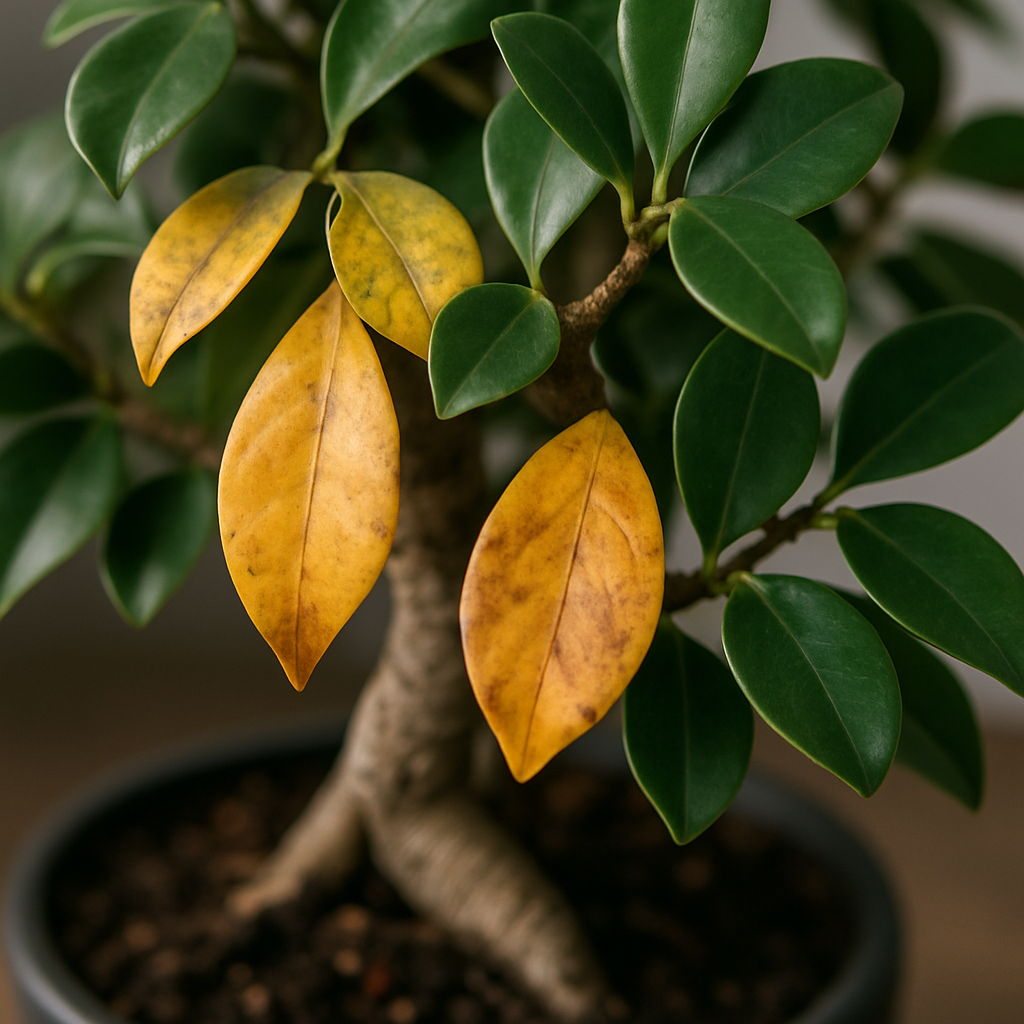Indoor Bonsai Turning Yellow? Here’s the Fix

Yellow leaves on your indoor bonsai can be alarming, but it’s often a sign that something is amiss in its care routine. Identifying the underlying cause is crucial for restoring your bonsai to health.
Common Causes of Yellow Leaves:
- Improper Watering:
- Overwatering: This is one of the most frequent culprits. When the soil remains consistently soggy, it deprives the roots of oxygen, leading to root rot. The leaves may turn yellow, starting from the tips and edges, and may also become soft and droop. The soil may also have a foul odor.
- Underwatering: Insufficient watering can also cause yellowing. When the soil dries out excessively, the roots are unable to absorb the necessary moisture and nutrients, causing the leaves to turn yellow and become crispy. The soil may also shrink away from the sides of the pot.
- Nutrient Deficiencies:
- Nitrogen Deficiency: Nitrogen is essential for leaf growth and chlorophyll production. A lack of nitrogen can cause older leaves to turn yellow first, progressing to newer leaves if the deficiency is not addressed. The overall growth of the bonsai may also be stunted.
- Iron Deficiency (Chlorosis): Iron is necessary for chlorophyll synthesis. An iron deficiency typically manifests as yellowing between the veins of new leaves, while the veins themselves remain green. This is often caused by alkaline soil.
- Insufficient Light: Bonsai need adequate light to photosynthesize and produce energy. Insufficient light can cause the leaves to turn yellow and become weak. The bonsai may also become leggy, with long, spindly growth.
- Pest Infestations:
- Spider Mites: These tiny pests suck the sap from the leaves, causing them to turn yellow, stippled, and eventually drop off. Look for fine webbing on the leaves and stems.
- Aphids: These sap-sucking insects can also cause yellowing leaves. They are often found clustered on new growth. They also secrete a sticky substance called honeydew, which can attract ants.
- Scale: These insects attach themselves to the leaves and stems and suck the sap, causing yellowing and stunted growth. They are often difficult to spot, as they blend in with the bark.
- Salt Buildup: Over time, salts from tap water and fertilizers can accumulate in the soil, damaging the roots and causing yellowing leaves. White crusty deposits may be visible on the soil surface or the pot.
Solutions:
- Adjust Your Watering Schedule:
- Overwatering: Allow the soil to dry out completely between waterings. Ensure proper drainage by using a well-draining bonsai soil mix and a pot with adequate drainage holes.
- Underwatering: Water thoroughly until water drains out of the bottom of the pot. Check the soil moisture regularly and adjust your watering schedule accordingly.
- Address Nutrient Deficiencies:
- Fertilize Regularly: Use a balanced bonsai fertilizer according to the instructions on the label. Choose a fertilizer specifically formulated for bonsai.
- Correct Iron Deficiency: Use a chelated iron supplement to correct iron deficiency. Also, check the soil pH and adjust it if necessary.
- Provide Adequate Light: Place your bonsai in a location where it will receive plenty of bright, indirect light. If necessary, supplement with a grow light.
- Treat Pest Infestations:
- Spider Mites: Use a miticide or insecticidal soap. Increase humidity around the bonsai.
- Aphids: Use insecticidal soap or neem oil.
- Scale: Remove scale insects manually or use horticultural oil.
- Flush the Soil: To remove salt buildup, flush the soil with distilled water several times. Allow the water to drain out of the bottom of the pot. Repot the bonsai with fresh soil if the salt buildup is severe.
By carefully observing your bonsai and addressing any issues promptly, you can prevent yellow leaves and ensure its continued health and beauty.